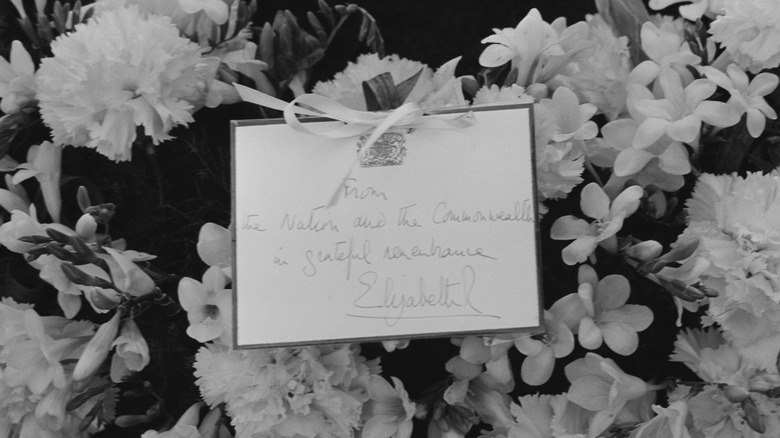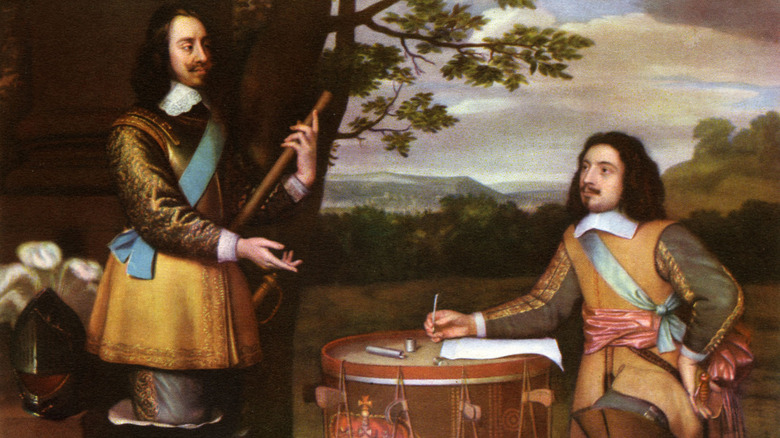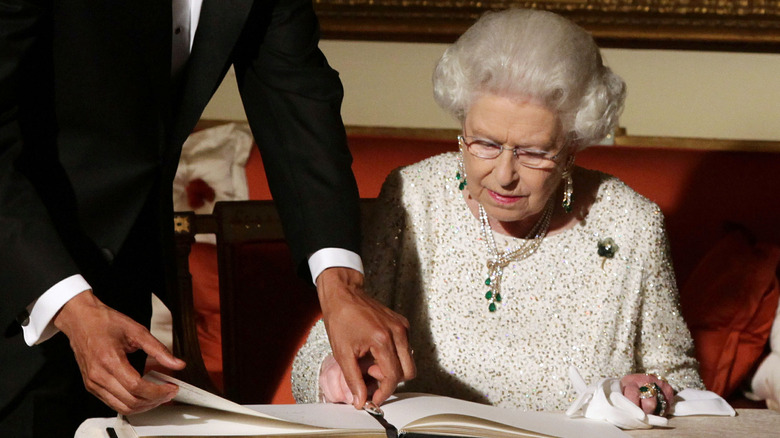Why Queen Elizabeth Always Signs Her Name As 'Elizabeth R'
Queen Elizabeth II was born Elizabeth Alexandra Mary Windsor. You probably didn't know that. Why would you? She's just "Queen Elizabeth," or "Elizabeth," or "the queen," or "Her Majesty."
However, in September 2021, Cosmopolitan magazine's United Kingdom outlet noted that a post shared by Queen Elizabeth (via the @royalfamily Instagram account) ended with the sign-off "Elizabeth R." At the end of her post praising Paralympic athletes, the Queen wrote, "I send my very best wishes to all those who have contributed to the success of these memorable Games. ELIZABETH R." (If signing a tweet with your name sounds like something your grandmother would do, remember the queen is 95 years old.) And it wasn't a typo. A 2014 TIME article records the Queen of England's first-ever tweet: "It is a pleasure to open the Information Age exhibition today at the @ScienceMuseum, and I hope people will enjoy visiting. Elizabeth R."
It turns out the queen's sign-off is in keeping with centuries of royal tradition.
Signature of the Sovereign
Why does Queen Elizabeth sign her name as "Elizabeth R"? This is her royal sign-manual. "Sign manual" is an outdated term for "signature," and the royal sign-manual is just that (via Merriam-Webster). The queen or king's royal sign-manual is simply the king or queen's first name and the letter "R." According to Harper's Bazaar, the "R" denotes royal authority and stands for "rex" (if used by a king) or "regina" (if used by a queen)
Monarchs didn't always have last names (frankly, they didn't need them), but instead used their regnal name (the name by which they are known as ruler) and the name of the royal house to which they belonged. According to the Royal Family official website, it's the first name that was always important: British monarchs were traditionally named for the country they governed. While in modern times, you will still sometimes hear the queen referred to as "England," in the past, they meant this in a much more literal sense. A monarch's sign-manual was the signature of the country itself — not an individual who needs a last name.
Rex, Regina, and Royal Authority
According to royal historian Marlene Koenig in Harper's Bazaar, monarchs always sign their names this way on formal documents. "It designates the authority of the sovereign," she said. "You will find the use of 'R' as far back as Henry I."
European monarchs have signed their names this way for centuries. In 1795, King George III affixed "George R" to a decree authorizing Hessian mercenaries to suppress the colonist uprising in what is now the United States. Queen Elizabeth I declared England a Protestant nation, and she, too, signed the decree with "Elizabeth R."
The royal sign-manual can transform a bill into a law, grant royal authorization to a directive, or even simply verify an announcement as an official Buckingham Palace release. In the modern era, the British monarchy is more an institution of cultural symbolism than a regulatory body, but the queen still signs documents including royal assent decrees for Parliament and, of course, on her Instagram posts about the 2021 Paralympics.


